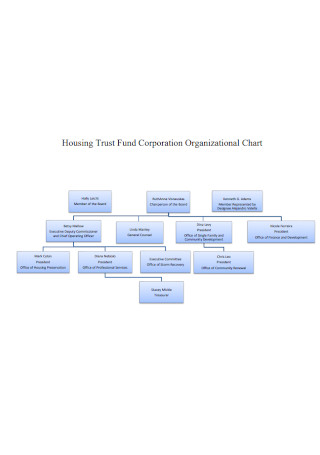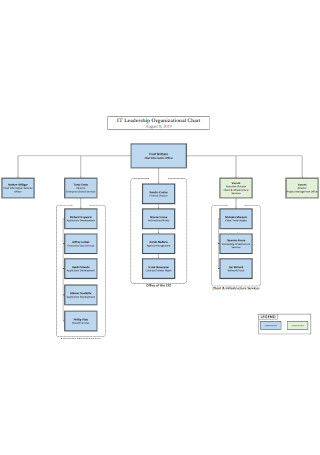Corporate Organizational Chart
-

Sample Corporation Organizational Chart Template
download now -

Hospital Corporate Organizational Chart Template
download now -

Simple Corporate Organizational Chart Template
download now -

Health Care Corporate Organizational Chart
download now -

Corporate Directors Organizational Chart
download now -

Sample Grid Corporate Organization Chart
download now -

Simple Corporation Organizational Chart
download now -

Corporation Group Management Organizational Chart
download now -

Pharma Corporation Organization Chart
download now -

Corporate Organizational Chart Format
download now -

Housing Trust Fund Corporation Organizational Chart
download now -

Corporate Portfolio Organizational Chart
download now -

Petroliem Corporate Organizational Chart
download now -

Formal Corporate Organizational Chart
download now -

Corporate Planning Organizational Chart
download now -

Finance Corporation Organizational Chart
download now -

Power Corporation Organization Chart
download now -

Organizational Chart of Ministry Corporate Affairs
download now -

IT Corporate Leadership Organizational Chart
download now -

Pension Corporate Organizational Chart
download now -

Printable Corporate Organizational Chart
download now -

Corporate Staff Organizational Chart
download now
FREE Corporate Organizational Chart s to Download
Corporate Organizational Chart
What Is a Corporate Organizational Chart?
Types of Organizational Structures
Why the Need for an Organizational Chart?
How To Make a Corporate Organizational Chart
FAQs
What’s the difference between a mechanistic structure and an organic structure?
What is a vertical organization?
What is a horizontal organization?
What Is a Corporate Organizational Chart?
A corporate organizational chart is a visual presentation of an entity’s structure by showing how relationships between members and departments are interconnected with each other. The common use for this chart is to inform new hires of the hierarchy and the leadership in an organization as it’s important to know the who’s who in a company. However, they’re also useful in managing different personnel and in executing better planning strategies for different project plans.
The practice of corporate organizations and the importance of having a definite labor division is not a modern concept. Looking back at the history of organizational structures, the concept was theorized by the likes of Adam Smith, the father of modern capitalism, and Abraham Maslow, the genius behind the hierarchy of human needs. However, the organizational chart structure is attributed to Daniel McCallum when he devised the first organizational chart in 1855. McCallum believed that roles and its divisions needed to be transparent to all. As an engineer and general superintendent for the New York and Erie Railway, he came up with a diagram to fulfill that purpose. His model became the first formally known organizational structure, and compared to today’s standard tree diagram, McCallum’s model was a masterpiece.

Types of Organizational Structures
The face of business changes constantly. With this also comes shifts within every enterprise and organization. They don’t only change; they vary as well. Below are some of the different types of organizational structures found in most businesses:
Functional Structure
Among all other types, a functional structure is the most common type. It divides the organization according to its respective functions. In this type of diagram model, the individuals are under the label of different departments to quickly identify what role they’re playing in operation. The most common departments include the human resource department, the marketing department, and the customer service department. The functional structure’s advantage is that every person can focus on a single task or specialty because they’re placed in a space that suits their specialty. While it’s a common type among most companies, the boundaries set by different functions in the organization can hinder communication and interpersonal connection between different departments because they tend to work all the time separately.
Divisional Structure
A divisional structure is a type of organization where departments act as an independent enterprise but are ultimately under the same brand or company name. There are three categories under the divisional structure:
Geographical – this is the common set-up for international companies that have offices from different parts of the world. They divide their organization according to their respective locations, mostly because they want to be near to certain resources. This also allows certain businesses to cater to their consumers on a deeper level because they’re situated in their area instead of being overseas.
Product-based – product-based divisional structures are brands or products which are sold or managed independently but are actually owned by a single company. It’s not uncommon for a business to manufacture different products and offer different services. However, for large corporations, they divide their products into different sole business ventures that have their own departments.
Market-based – this type of structure is classified according to different consumer specifications. This is applicable to companies that have different client scopes in their marketing plan. Their consumers have unique preferences and needs that require separate attention in order for their operations to be effective. As an example, a giant production company can divide its operations into different audience age gaps or types of content.
Processed-based – just like what the name suggests, its divisions vary according to the type of process flow. Although they are labeled under different titles, each division is intercorrelated with one another. This type of diagram shows the relationship between different groups and how they’re roles can help accomplish the task together.
Matrix Structure
The matrix structure possesses the characteristics of both a functional and divisional structure. This structure can operate separately while still under the management of a single organization. This is the typical scene for huge corporate structures. However, this can create complications as a single unit can have dual management that confuses.
Why the Need for an Organizational Chart?
For obvious reasons, an organizational chart’s purposes are to present the company’s labor divisions, hierarchical structures, and key roles visually for easy comprehension. It also introduces you to the different individuals around the organization to get you acquainted with them and identify the right person when there’s a need for a report communication.
It’s characteristic as a diagram imprinted with names and position is not the only advantage it has. The purpose of an organizational chart can go as far as it is a vital tool in planning and management. Below are some of the reasons why you need an organizational chart:
How To Make a Corporate Organizational Chart
When making an organizational chart, it’s hard not to get intimated by the amount of information that you need to arrange on a single visual structure. To help you get started, we provide with some basic steps when doing your own:
Step 1: Gather Information
Before you can start with your organization chart’s layout, start by gathering all information relevant to your task. If you start with the chart’s structure without knowing the length or number of the content, there’s a big possibility that it would still be useless. There might be significant adjustments that would render your initial design useless. By getting all the information, you’ll be given an idea of what your organizational chart should look like and how you’ll arrange it in a manner that’s visually comprehensible and easy to interpret.
Step 2: Know the Type
Once you’ve completed all the needed data, it’s time for you now to identify the type of organization that your company or organization has. In most cases, it can be as simple as a functional structure where you only need to label each role according to its departments. However, it can get complicated once you find out that you also need to include other units that might be outside your organization but are somehow related to your organization. Research on this, so you’ll know how to piece your data together.
Step 3: Arrange a Draft
You might want to draw a rough draft first to set everything in their proper places. Categorize all members according to their department and determine the position’s hierarchy, so you’ll know who’s on the top and who’s on the bottom. Make a rough outline of the entire chart and put in all the information you have. Make sure you got everything right. Before you move on to making the actual layout on a software program, this is the best time for you to proofread your work. At this stage, it’s easier to make changes on a draft rather than on the virtual copy. Recheck your spellings and see to it that every individual is in their correct positions. You may also consult those who might know how the organization works more than you.
Step 4: Be Visually Consistent
When you start encoding your work using a software program, you will want to have an output that’s pleasing to the eye to invite viewers and boost your output comprehensibility. Your shapes, fonts, and filler colors must be all consistent. This is more on the side of the functionality rather than the aesthetic. Because it’s graphic data, it’s format should invite attention and promote readability. No one wants to go through a graph with different shapes, uneven lines, and a rainbow of colors. It’s distracting, and it prevents people from getting the information that they need.
FAQs
What’s the difference between a mechanistic structure and an organic structure?
Mechanistic and organic structures are both different structure styles of an organizational chart. A mechanistic structure is the traditional top-down structure of an organization that clearly shows the chain of command among every position. The organic structure, on the other hand, is a more flexible and less formal arrangement that shows how different teams relate to each other.
What is a vertical organization?
Vertical organizations are those that employ the shape of a pyramid—the roles who sit at the top have more authority than the ones who are below. The flow of communication comes from the top as they devise a decision that is going to be implemented by the ones who are on a low level.
What is a horizontal organization?
Horizontal organizations are those that emphasize the value of collaborative efforts rather than the rank system. In this type of organization, each employee is given the opportunity to make their own decisions and accomplish their work without the management behind their back. Here they’re free to exchange ideas and work together to get the job done.
Whether you’re on top of your organization’s pyramid or at the bottom, it’s essential to know that every role matter. An organizational structure shouldn’t be used as a way to determine the rank of one’s position but to determine the significance of a role and how he or she can work their way up to the ladder for better opportunities and learn for a much challenging responsibility.
